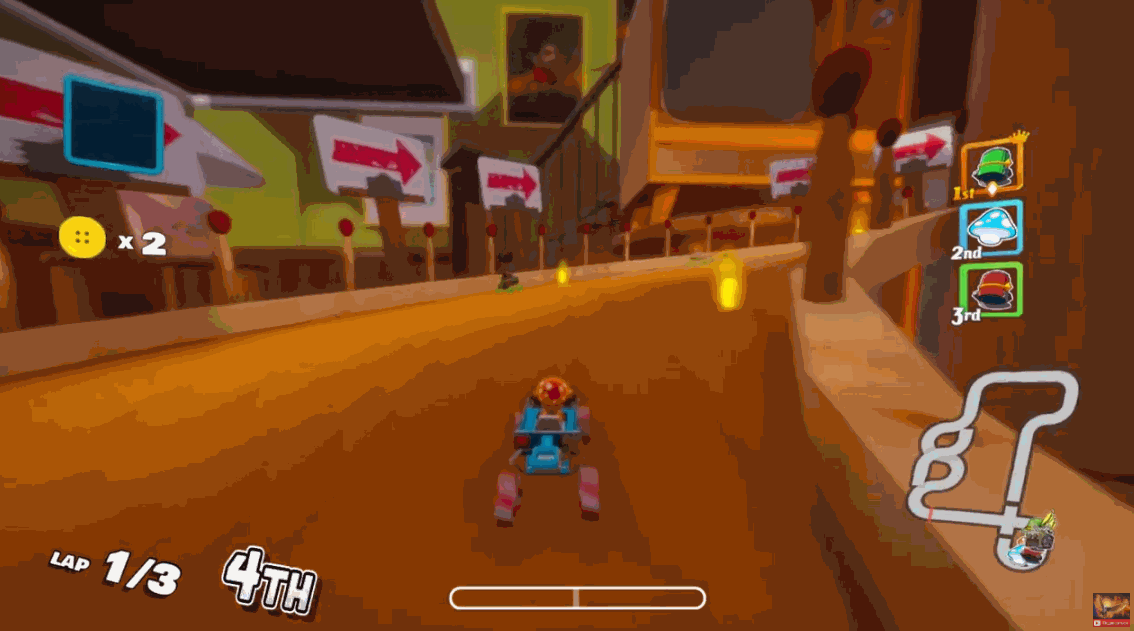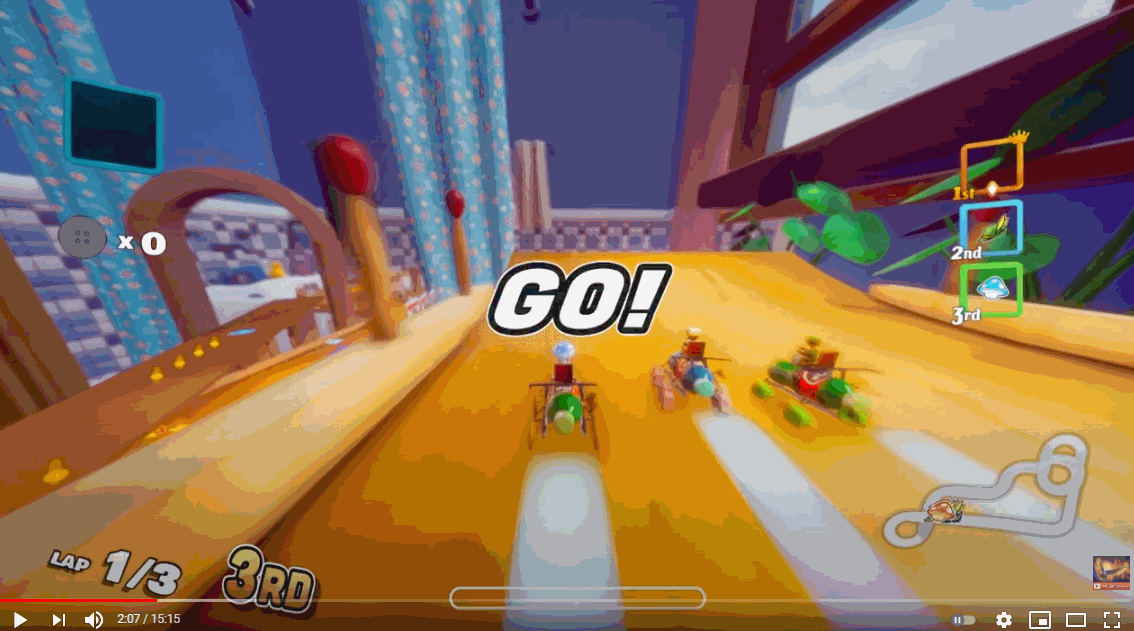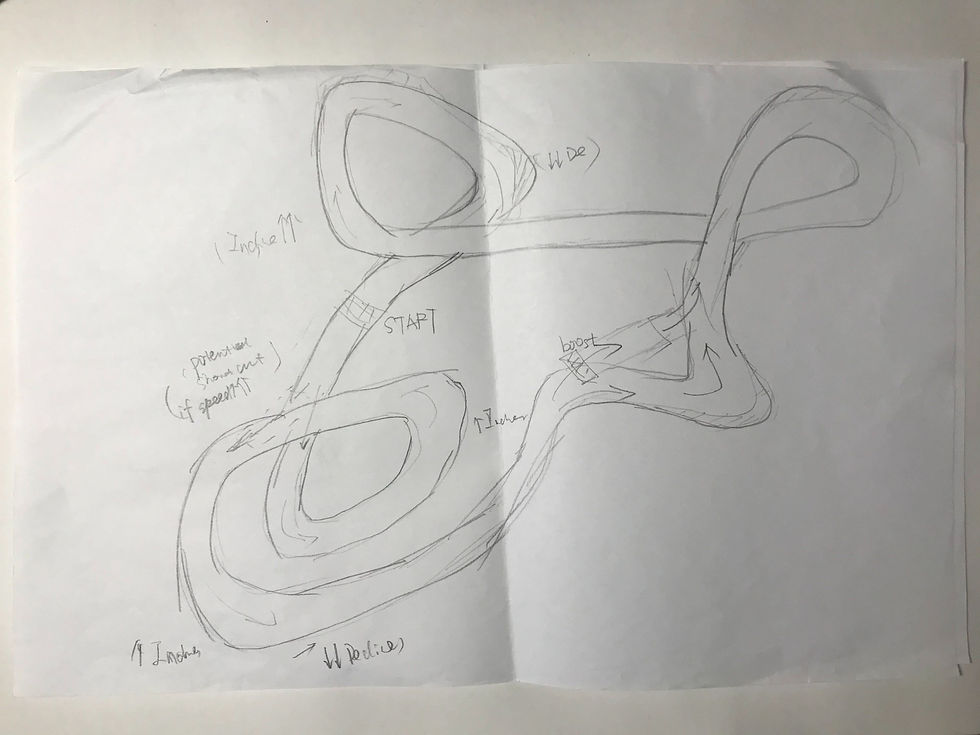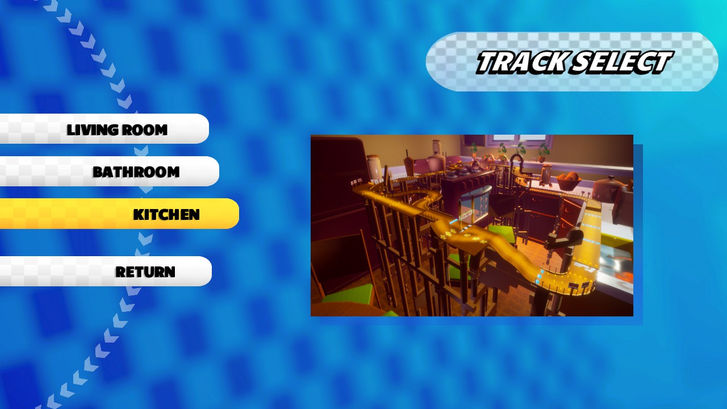
GAME DESCRIPTION
HaberDashers is a console-style arcade (kart) racer for the PC in which players control miniature humanoid inhabitants of an everyday home, racing past outsized household items and through rooms as they compete against human and AI opponents with both driving skills and item pick-ups.
RESPONSIBILITY
-
Level Designer, create 2 tracks out of 3 for the game
-
AI Designer, work with programmers for AI personality solutions
-
QA Test (Contribute Playtest Handbook Attachment here)
GAME INFO
Team Name:
Team Size:
Role:
Genre:
Engine:
Develop Time:
Shipped Date:
SMU Guildhall C29
56
Level Designer (Track)
Arcade Racing Game
Unreal Engine 4
12 Weeks
May 2020
GAME TRAILER
GALLERY
GAMEPLAY VIDEO
TRACK DESIGN
In this project, I acted as a track designer, working closely with other designers, did researches together, and having lots of good discussions. My ideas contributed a lot to the bathroom track and the living room track, I also acquired very helpful communication skills and effective strategies for teamwork in a large scale team.

Working Example 1:
The living room track,
continuous book pile ramps

Working Example 2:
The bathroom track,
falling into the bathtub
after a straight long lane
At the early stage of this project, I and my partner came up with a speed-map practice for idea generation. Every day we set up goals, rules, and restrictions for the practice, then spent 10 minutes drawing paper maps and 20 minutes presenting and exchanging ideas. Though most of the maps were roughly presented, we had a lot of fun and meanwhile discovered several possible gameplay.






Some speed map examples I worked with my teammates
To get a clear vision of how the small carts and tracks look like in a larger world, we borrowed a set of HotWheel from school and built tracks in the real world. We took videos of them, calculated the metrics, and communicated with the artists about track mod kit scales.
During implementing our final ideas in the engine, we cooperated with other designers who were responsible for hazards and pick-up systems. We realized that a minor change of item placement would have a huge impact on the gameplay. So we discussed a lot, tested a lot, and refined levels several times to make them feel wonderful.




Digital maps and final tracks in the editor
AI PERSONALITY DESIGN
I joined the AI team and helped with AI system refinement during the Alpha milestone. After several discussions with the lead team and AI programmer, we decided to design 4 different AI personalities. For example, speed runners use boost-pads and shortcuts to get a high rank while aggressive drivers usually change lanes to disturb others.
To debug the actual effect of each parameter that our programmers provided, I played games many times with AIs, collected a lot of data, and then did some analysis. Then I modified the parameters to fit these personalities. Though it was a tough task due to no successful experience to follow, I felt very proud when I finally saw AIs became a bit alive. I also gained a good experience of working closely with programmers and communicating in their way.

Working Example:
AI behavior observation test
Speed-runners prefer using shortcuts






Some working examples of AI personality design and testing
POST MORTEM
What went well?
-
Speed Map Practice
We had many speed map competitions during the brainstorming period. That allowed us to design creative gameplay ideas and combine interesting chunks together. Meanwhile, it's a good way for icebreaking and self-challenge.
-
Design Meetings And Discussion
Frequent meetings and feedback from teammates allowed us to create and refine the tracks with high quality. What's more, we were able to be inspired by discussions and improve some design ideas.
What went wrong?
-
Level Organization And Consistency
There were many streaming levels for different elements of each level, but it was difficult to organize all developers using them correctly and effectively.
-
Communication Not Enough Between Disciplines
We were not sharing the same asset priority system with the artists so that some art assets were found out of date and failed to be updated in late milestones. Besides, it also resulted in the chaos of some interactive items. The train in the living room track, working as a moving hazard, was not correctly scaled and missed some functional elements on it.
What I learned?
-
Quick Adaption To Virtual Teamwork
Due to COVID-19, we moved to virtual development after the first-playable milestone. We learned to use Monday, Jira, and Zoom Meetings for game developing. There were some difficulties to adapt the changes, but eventually, we made it.
-
Communication Is Always Important
Setting up communication pipelines and obeying the rules helped a lot in teamwork.










